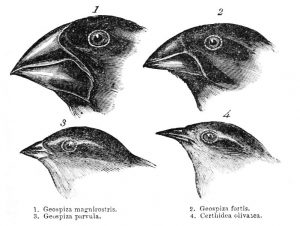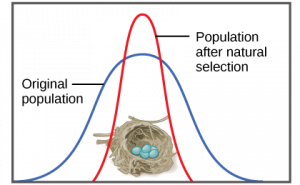Please find my revised definition for “evolutionary fitness” below:
Introduction: Definitions are used to explain technical terms and concepts to an audience that may not be familiar with it. This assignment requires us to explain a technical term or concept using each of the three types of definitions, namely: parenthetical, sentence and expanded. The definitions will be formulated while keeping the technical level of the audience in mind.
Term: Evolutionary fitness
Situation: A biology professor is differentiating the concept of evolutionary fitness from physical fitness to the general public at a public seminar on biological evolution.
Parenthetical definition: Evolutionary fitness is the quantitative measure of natural and sexual selection)
Sentence definition: Evolutionary or Darwinian fitness is a concept used by evolutionary biologists to quantify how successful an individual is likely to be at reproducing and passing on its genes to the next generation. It is different from physical fitness which is a state of health and wellbeing.
Expanded definition: Charles Darwin published his book, “The Origin of Species” in 1859 which presented the ‘theory of evolution by natural selection’ which revolutionized Biology (Dobzhansky 1973). Darwin proposed the idea that all species have descended from a common ancestor. While such a concept had existed before Darwin, it did not gain currency because a mechanism for it seemed incomprehensible. The mechanism that Darwin presented is known as ‘natural selection’, a phenomenon that Herbert Spencer popularly referred to as “survival of the fittest”.
Evolution is the process by which new species can arise from the modification of existing species. Natural selection is what drives this process. The postulates of natural selection can be summarized as follows:
- Variation exists within all organisms. Variation that is caused by mutations, which is a spontaneous modification in the genes of an individual, is heritable. This means the modified gene, and hence the variation it causes, will be passed down to the individual’s offspring. Such heritable variation is the feedstock of natural selection.
- Although most mutations are deleterious, some an confer a beneficial trait. This means that individuals having such favourable mutations will have a more favourable chance of surviving and reproducing in their environment. The favourable mutation can be said to make the organism more ‘adapted’ to its environment.
- Variants having the favourable mutation or allele (an alternative form of a gene that arises due to mutation) are likely to have a competitive advantage over other individuals leading to their increased survival and reproductive success. As a result, they leave behind more offspring. It must be noted that the offspring also inherit the favorable mutation and so this process builds upon itself with every generation.
- Over each generation, the favorable allele increases in frequency in the population, as those that have it leave behind many more copies of themselves (offspring) than those that don’t. The more beneficial an allele is, the higher is the probability of it being passed to the gene pool of the next generation. It must be noted that we have discussed the case of the favorable allele increasing in frequency. This is known as positive selection pressure. The process is natural selection applies equally to disfavoring deleterious alleles and resulting in their removal from the population. This is known as negative selection pressure.
Over many generations, natural selection acting on many alleles drive change in the organism, constantly adapting it to an ever-changing environment. If two populations of the same species are separated, they can evolve along different trajectories and eventually become sufficiently different to become two separate species. This branching off event is known as speciation, or the birthing of a new species. This has created the incredible diversity of life we see around us today.
Image 1: Darwin’s Finches are an example of evolution by natural selection. Within 15 milliom years of arriving on the Galapagos islands, selection pressure on break size had causes the ancestral species to split into 15 different species. Each species had evolved a beak size that was optimal for the unique diet of seeds found on the different islands in the archipelago.
Verginelli, Fabio & Aru, Federica & Battista, Pasquale & Mariani-Costantini, Renato. (2009). Nutrigenetics in the Light of Human Evolution. Journal of nutrigenetics and nutrigenomics. 2. 91-102. 10.1159/000228251.
The mathematical function that describes the probable contribution of an individual’s genotype (the sum of all of the alleles in an individual) to the gene pool of the next generation is described as the individual’s evolutionary fitness. An evolutionary fitness greater than 1 indicates that the genotype is increasing, whereas a value of less than 1 indicates negative selection, or the decrease in abundance of the genotype.
As point 3 and 4 above make clear, the concept of evolutionary fitness relies on individual reproductive success. It is often wrongly conflated with the idea of physical fitness. Physical fitness of an organism can contribute to a longer life-span due to increased survival. Whereas physical fitness is often a component of evolutionary fitness, physical fitness in isolation is inconsequential to the evolutionary process. An organism that is physically supreme but does not enjoy greater reproductive success than its peers will not pass on its beneficial genes to the next generation at a greater rate. Therefore, the beneficial gene will lack the driving force that would increase its frequency and over time may even be lost completely due to chance events known as ‘genetic drift’ (Gould 2002). Therefore, it is clear that Herbert Spencer’s popular adage “survival of the fittest” is a misnomer and should correctly be redefined as the “survival of the form that is most likely to leave behind the most copies of it in successive generations” (Wassersug and Wassersug 1986).
Image 2: The diagram on the left shows the selection pressure on clutch size in Robins. Larger and smaller clutch sizes experience negative selection pressures in favour of an optimal clutch size. This is because larger clutch sizes lead to malnourished chicks, whereas, small clutch sizes lead to healthy chicks but too few of them. This latter point excellently demonstrates the trade-off between physical fitness and evolutionary fitness.
“Adaptive Evolution | Biology for Majors.” Lumen Learning, OpenStax CNX, Accessed 7 October 2020, https://courses.lumenlearning.com/wm-biology2/chapter/adaptive-evolution/.
References:
- Dobzhansky, Theodosius (March 1973), “Nothing in Biology Makes Sense Except in the Light of Evolution”, American Biology Teacher, 35 (3): 125–129
- Gould SJ (2002). “Chapter 7, section “Synthesis as Hardening””. The Structure of Evolutionary Theory. Harvard University Press.
- Verginelli, Fabio & Aru, Federica & Battista, Pasquale & Mariani-Costantini, Renato. (2009). Nutrigenetics in the Light of Human Evolution. Journal of nutrigenetics and nutrigenomics. 2. 91-102. 10.1159/000228251.
- Wassersug, J. D., and R. J. Wassersug, 1986. Fitness fallacies. Natural History 3:34–37
- “Adaptive Evolution | Biology for Majors.” Lumen Learning, OpenStax CNX, Accessed 7 October 2020, https://courses.lumenlearning.com/wm-biology2/chapter/adaptive-evolution/.
INSTRUCTOR’S NOTE: PLEASE NOTE: It is necessary to publish your post – this remains in edit view.
Also, the attachment has no name on it – ?


Leave a Reply